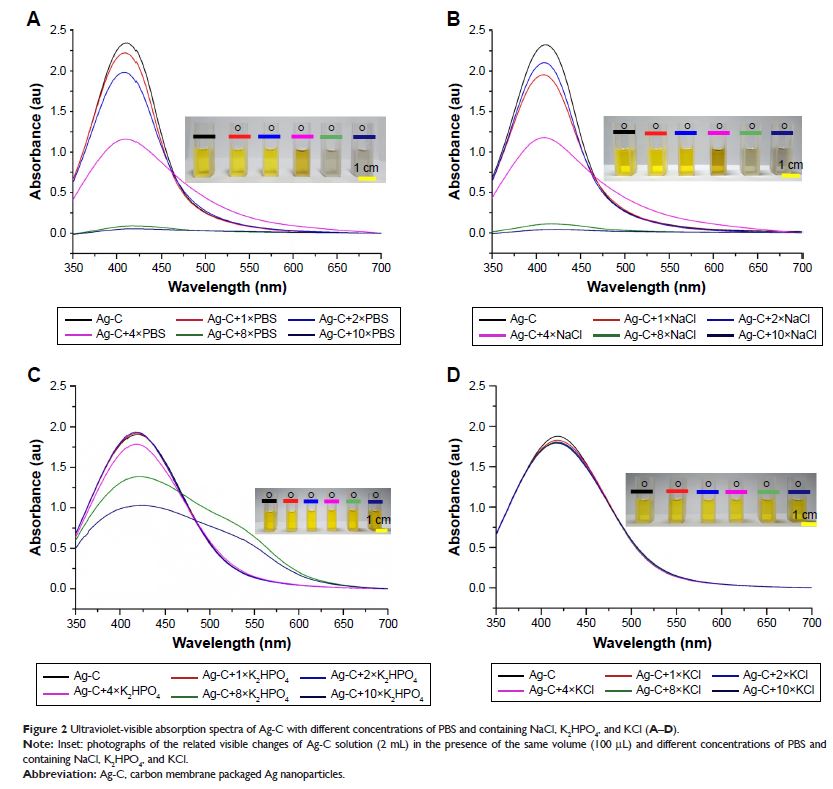108985
论文已发表
注册即可获取德孚的最新动态
IF 收录期刊
- 3.4 Breast Cancer (Dove Med Press)
- 3.2 Clin Epidemiol
- 2.6 Cancer Manag Res
- 2.9 Infect Drug Resist
- 3.7 Clin Interv Aging
- 5.1 Drug Des Dev Ther
- 3.1 Int J Chronic Obstr
- 6.6 Int J Nanomed
- 2.6 Int J Women's Health
- 2.9 Neuropsych Dis Treat
- 2.8 OncoTargets Ther
- 2.0 Patient Prefer Adher
- 2.2 Ther Clin Risk Manag
- 2.5 J Pain Res
- 3.0 Diabet Metab Synd Ob
- 3.2 Psychol Res Behav Ma
- 3.4 Nat Sci Sleep
- 1.8 Pharmgenomics Pers Med
- 2.0 Risk Manag Healthc Policy
- 4.1 J Inflamm Res
- 2.0 Int J Gen Med
- 3.4 J Hepatocell Carcinoma
- 3.0 J Asthma Allergy
- 2.2 Clin Cosmet Investig Dermatol
- 2.4 J Multidiscip Healthc

NaCl: 可确保抗菌银基纳米颗粒更安全地在体内使用
Authors Liu MZ, Zhang HQ, Song XW, Wei CC, Xiong ZF, Yu F, Li C, Ai FR, Guo GH, Wang XL
Received 4 October 2017
Accepted for publication 24 January 2018
Published 21 March 2018 Volume 2018:13 Pages 1737—1748
DOI https://doi.org/10.2147/IJN.S153168
Checked for plagiarism Yes
Review by Single-blind
Peer reviewers approved by Dr Alexander Kharlamov
Peer reviewer comments 4
Editor who approved publication: Dr Linlin Sun
Background: As antibiotics progressively cease to be effective, silver based
nanoparticles (SBNs), with broad antibacterial spectrum, might be the last line
of defense against malicious bacteria. Unfortunately, there are still no proper
SBNs-based strategies for in vivo antibacterial therapies. In this article, new
carbon membrane packaged Ag nanoparticles (Ag-C) were synthesized. We assessed
the effect of Ag-C with NaCl on size, cytotoxicity, antibacterial properties,
metabolism and sepsis models.
Methods: The size of Ag-C with NaCl was accessed with
UV-vis, TEM and SEM. Staphylococcus aureus , Escherichia coli and Pseudomonas aeruginosa were
used to illustrate the antibacterial properties of SBNs affected by NaCl. L929
and 3T3 cell lines were cultured in vitro; CCK-8 assay was used to test
cytotoxicity. Then, we explored the metabolism of Ag-C with NaCl in vivo.
Finally, the effect of Ag-C with 4× NaCl on sepsis was observed.
Results: NaCl could regulate the size of Ag-C. Ag-C
exhibited superior antibacterial properties compared to similar sized pure Ag
nanoparticles. Furthermore, the addition of NaCl could not only reduce the
cytotoxicity of Ag-C, but could also continue to discharge Ag-C from major
organs. Based on these factors, this method was used to treat a sepsis model
(induced via cecal ligation and puncture), and it achieved satisfactory
survival results.
Conclusion: This discovery, though still in its infancy,
could significantly improve the safety and feasibility of SBNs and could
potentially play an important role in modern in vivo antibacterial
applications. Thus, a new method to combating the growing threat from
drug-resistant bacteria could be possible. NaCl is the key to excretion of SBNs
after in vivo antibacterial use.
Keywords: Ag nanoparticles,
NaCl, cytotoxicity, antibacterial, metabolism
